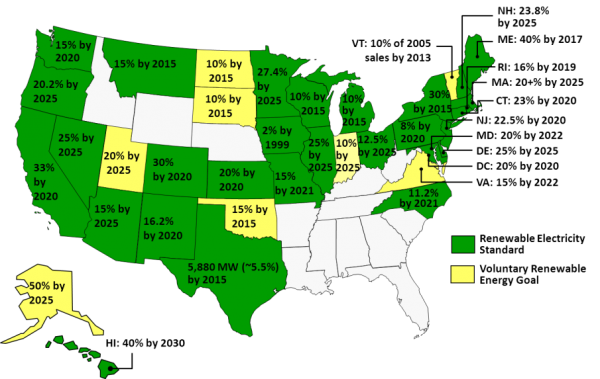Poland’s political leaders need to meet West Virginia’s State Senate President Jeff Kessler. At a recent forum on increasing economic diversity in the state, Kessler said, “Coal has been king in West Virginia for 100 years, but it hasn’t taken very good care of its subjects.” While Kessler was referring to the poverty many of the state’s largest coal producing counties have experienced, people in Poland are facing serious health consequences because of coal. One study from Bankwatch reports that living and breathing in Krakow for a year, a resident inhales as much benzopyrene, a highly carcinogenic pollutant, as he or she would from smoking 2,500 cigarettes.
While Poland’s economy is also more heavily dependent on coal than the rest of Europe, coal mining jobs have declined from more than 400,000 twenty years ago to about 115,000 today. And Poland has been a net importer of coal since 2009. Similarly, in the U.S. states like West Virginia have both an economic and cultural connection to coal that is rapidly producing fewer and fewer jobs due largely to new mining practices, but also due to shifts away from burning coal for electricity to cleaner alternatives.

A wind farm in West Virginia. Source: Flickr, Mark Plummer.
The clear news globally is that coal is declining and renewables are on the rise. In Warsaw, the United Kingdom Energy Minister announced that it would join the U.S. in opposing any World Bank funding of coal plants except in extreme circumstances. He said it’s “completely illogical” for developed countries to continue to provide financing for coal power plants abroad while shifting to cleaner sources at home.
Across the Pond, Canada and the U.S. are increasingly switching away from coal to natural gas and renewables. Coal-fired electricity fell from nearly half of U.S. generation in 2008 to 37 percent in 2012, while wind and solar quadrupled over this period. Earlier this week, Ontario announced that its last two operating coal plants, its giant Nanticoke complex — one of the world’s largest — and the Lambton station, on the Michigan border, will shut down by year’s end.
The Tennessee Valley Authority’s (TVA) announcement last week to retire 3,300 MW of coal capacity is further evidence of the eroding economic viability of the aging U.S. coal fleet. It continues the national drumbeat of more than 55,000 MW of coal capacity that has either been retired since 2009 or announced for retirement over the next several years. UCS’ “Ripe for Retirement” analysis shows that many more U.S. coal generators are economically vulnerable and should be considered for closure. Strong national carbon standards for new and existing power plants will be needed to ensure this trend continues, especially as natural gas prices slowly rise.
Poland relies heavily on coal to power its economy, but it does have alternatives. Lisa Friedman at Greenwire posted a terrific article looking at the challenges to renewables deployment in Poland, in sharp contrast to its German neighbor, which has a strong policy support for renewables. Backed by a feed-in tariff and long-term incentives, Germany is the world leader in installed photovoltaic capacity — about 30 GW in 2012. Poland has no similar policy support. The results are clear: there are 1,800 renewable energy installations in Poland for electricity generation, compared to 4 million in Germany. In 2007, Germany also decided to completely phase-out black coal mining by 2018.
In the U.S., state action on clean energy and climate has been an essential driver for reducing carbon emissions for over a decade. State laws like AB 32 in California and regional efforts like the Regional Greenhouse Gas Initiative in the Northeast and the more recently announced Pacific Coast Collaborative are creating growing demand for clean energy.
Even more emissions reductions are likely to come from the states. As the map below indicates, many states have renewable electricity standards that will achieve their targets over the course of this decade. New targets will have to be set to continue the transition away from coal to renewables. Michigan, Minnesota, Illinois, and California are already debating ways to strengthen their standards.
The real action on emissions reductions in the U.S. and around the globe appears to be at the state and provincial level, and sometimes even cities. For example, China announced in Warsaw that Beijing and Shanghai will launch emissions trading markets next week joining two other regional markets in China. The regional carbon markets cap CO2 emissions from electricity generators and manufacturers, and force companies that emit more than their cap to buy permits in the market from companies with surplus allowances. Hubei province and the cities of Tianjin and Chongqing also plan carbon markets as China gears up to launch a nationwide scheme later in the decade, potentially the world’s biggest.

A coal plant on China’s Yangtze River. Source: Flickr, ishmatt.
While these new initiatives in China are welcome, it is unclear whether it will be enough. The biggest increase in conventional coal (without CCS) is happening in China and India, and is projected to get worse over time. UCS recently signed on to a statement by 27 leading climate and energy scientists from around the world that no new coal plants should be built without carbon capture and storage. Greater deployment of CCS, and ramping up investments in renewable energy and energy efficiency will be necessary to have a chance at meeting global climate targets.
In Warsaw, the international regime is considering including state and provincial actions in their accounting of emissions reduction commitment. This seems to be a terrific idea, since that may well be where the real action on emissions reductions and even carbon pricing will occur.
The West Virginia Senate President made his comments on coal as he backed a campaign to create a “future fund” that would set aside tax dollars from the Marcellus Shale natural gas boom for improving education, infrastructure, and economic development. While this effort is not aimed at coal, and is a far cry from a carbon tax, the growing awareness by states that they are facing real economic environmental and health threats from burning coal may well spur more ambitious state efforts to impose fees on the companies that profit from selling them.
As the Warsaw meeting has us all ‘thinking globally,’ as always, we must all be ‘acting locally.’ To meet the climate challenge, the U.S. and other countries will need to adopt strong policies that build on the great efforts and success at the state and local levels.

